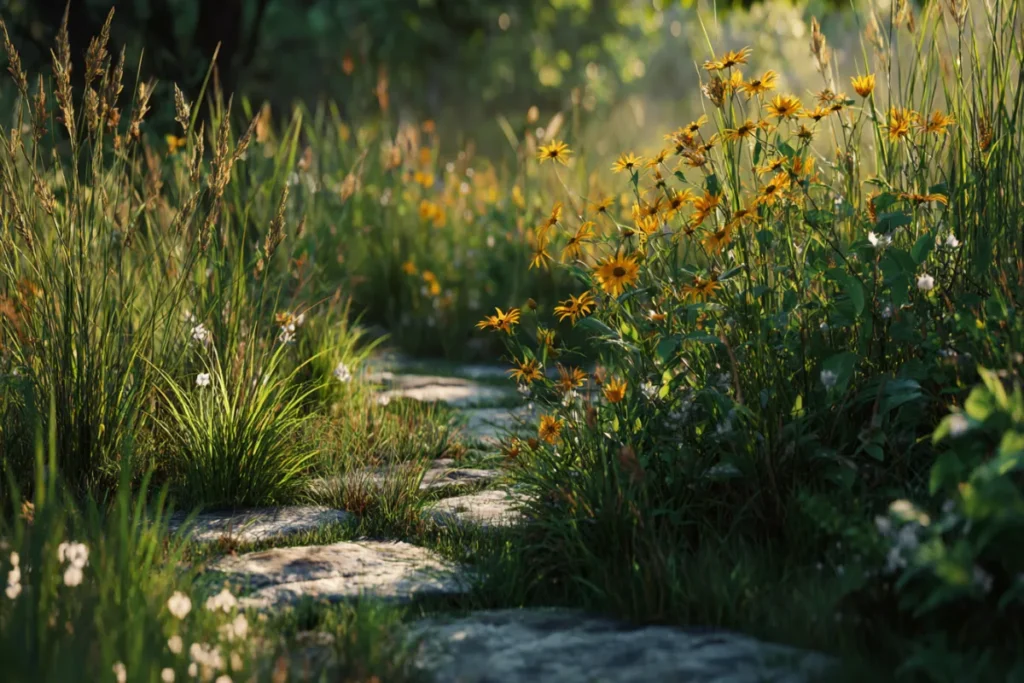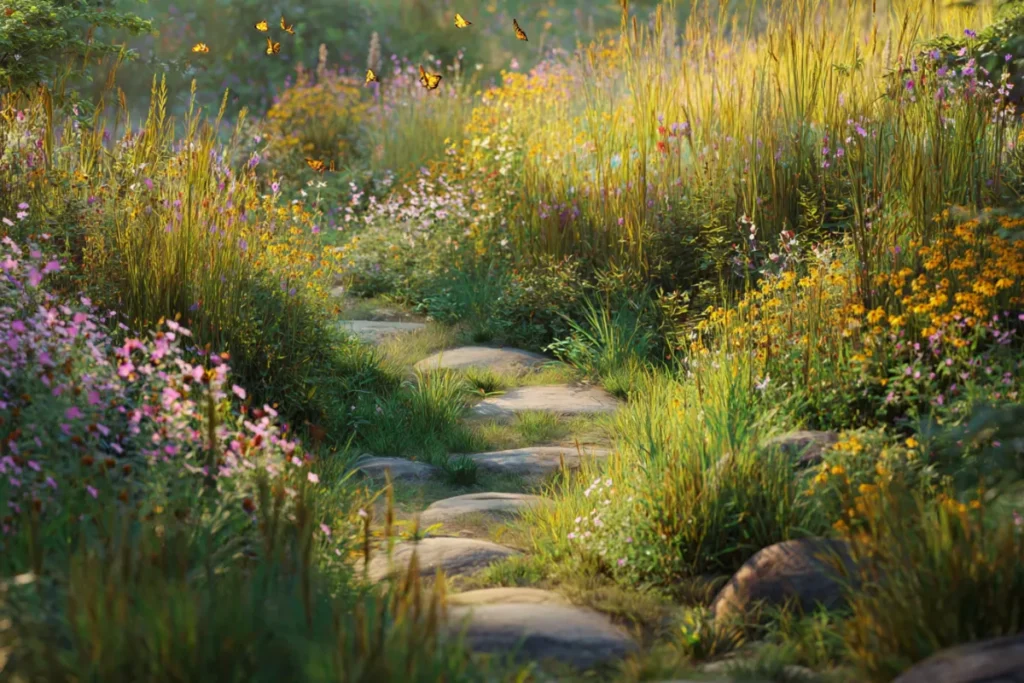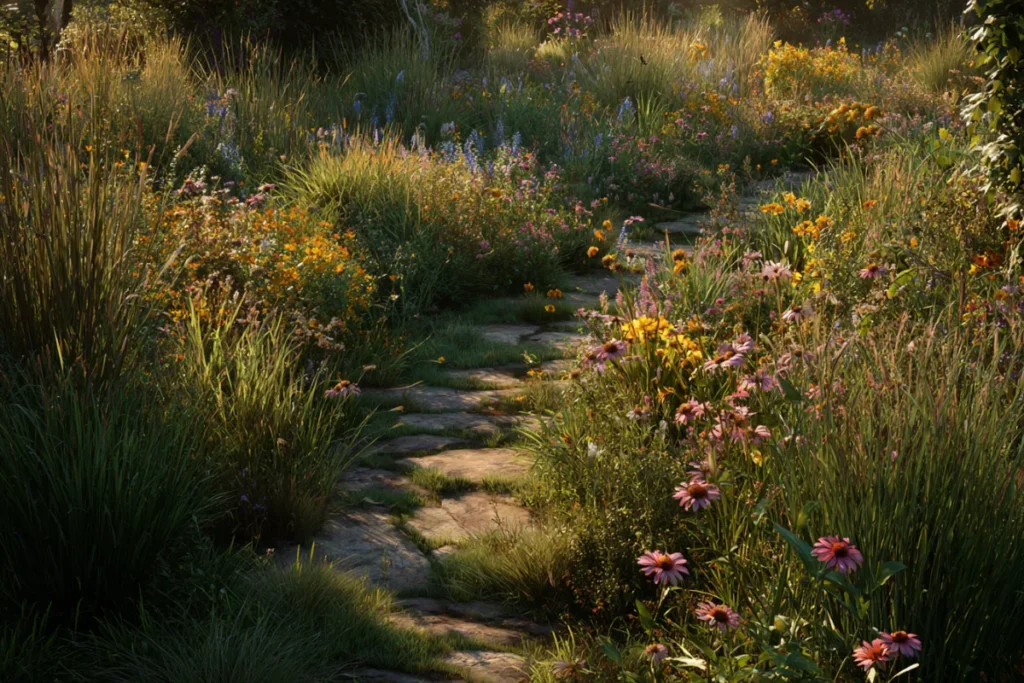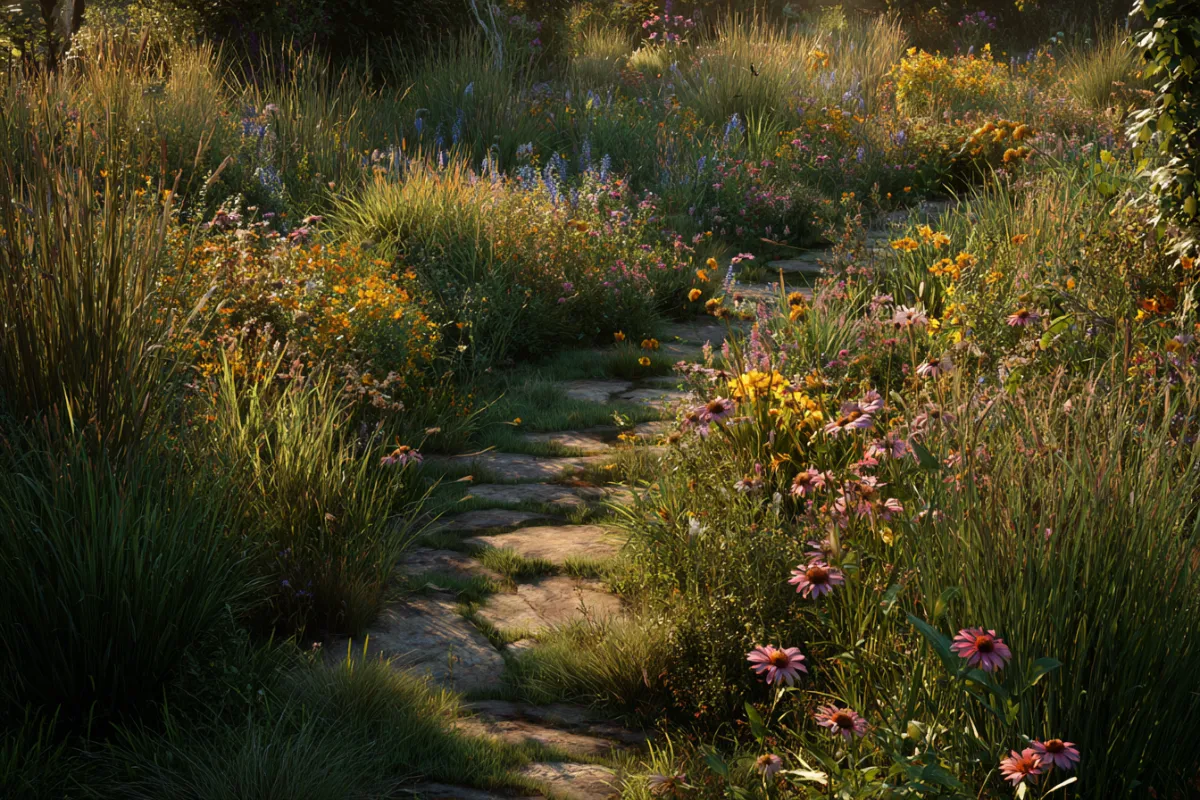Meadowscaping: The Natural Way to Transform Your Yard into a Flourishing Ecosystem
Bringing nature home is more than a trend—it’s a sustainable movement. Meadowscaping is rapidly gaining traction as homeowners, gardeners, and environmentalists look for smarter, healthier alternatives to traditional lawns. Unlike artificial landscaping methods, meadowscaping integrates native plants, pollinators, and natural growth patterns to recreate meadow ecosystems that are both low-maintenance and environmentally friendly.
In this guide, we’ll walk you through everything you need to know about meadowscaping—from the plants to use, how to plan your layout, and why this method is outperforming old-fashioned lawns in beauty and biodiversity.
📌 Check out our full gardening technology hub to stay up to date on the latest eco-living solutions.

In This Post
What Is Meadowscaping?
A Redefinition of Home Landscaping
Meadowscaping is the practice of replacing traditional turf or lawn space with native grasses, wildflowers, and shrubs that form a self-sustaining ecosystem. It mimics natural meadows, supporting pollinators, enriching soil health, and reducing the need for irrigation and chemical fertilizers.
Why Homeowners Are Switching

- Reduces water usage by 60–80%
- Cuts out chemical fertilizers and pesticides
- Attracts bees, butterflies, and birds
- Increases soil fertility
- Requires little to no mowing
🌱 Don’t miss our related article on eco-friendly lawn alternatives.
Planning Your Meadowscape: A Step-by-Step Guide
Step 1: Site Assessment and Preparation
Before planting, assess your soil type, sun exposure, drainage, and existing vegetation. Kill off turf grass using a solarization method or manually remove sod.
Step 2: Choose Your Meadowscaping Style
There are three common styles:
- Short Prairie (Low-growing): 12–18 inches tall
- Tall Grass Prairie (Dynamic): 2–4 feet, great for open yards
- Wildflower Dominant: More colorful, best for attracting pollinators
🌼 Check out our in-depth review on native planting tools.
Best Plants
Native Grasses
- Little Bluestem (Schizachyrium scoparium)
- Prairie Dropseed (Sporobolus heterolepis)
- Switchgrass (Panicum virgatum)
Flowering Perennials & Pollinators

- Black-eyed Susan (Rudbeckia hirta)
- Butterfly Milkweed (Asclepias tuberosa)
- Coneflowers (Echinacea spp.)
Meadow Shrubs
- New Jersey Tea
- Ninebark
- Low-growing sumac
📌 Related read: Top drought-tolerant plants for smart landscaping
Maintenance Tips
Year One: Establishment Phase
- Water weekly until established
- Remove aggressive weeds manually
- Apply light mulch for moisture retention
Year Two and Beyond
- Mow once annually in late winter
- Re-seed bare patches
- Add new native species to enhance biodiversity
Environmental Benefits
Restores Natural Habitats
Unlike lawns, meadows support:
- Pollinators (bees, butterflies, beetles)
- Ground-nesting birds
- Soil microorganisms and fungi
Carbon Sequestration & Water Conservation
- Deep-rooted natives pull carbon deeper into soil
- No runoff pollution from fertilizers
- Native plants survive on rainfall alone
🌍 Don’t miss our post on smart irrigation systems for native yards.
Common Misconceptions

“It Looks Messy”
Wrong. With intentional plant selection and layout, meadows can be structured and beautiful year-round.
“It Attracts Pests”
Actually, it balances the ecosystem. Predators like ladybugs and birds naturally reduce pest levels.
FAQs About Meadowscaping
What is a meadowscape?
A meadowscape is a landscaped area designed to imitate a natural meadow using native grasses, flowers, and shrubs. It prioritizes biodiversity, low maintenance, and sustainability.
What is meadowscaping makes it better?
Meadowscaping surpasses traditional lawns by offering lower water usage, higher wildlife support, and stronger soil health—all while reducing carbon emissions from lawnmowers and chemicals.
What is a meadow field?
A meadow field is a naturally occurring or intentionally planted area of low-growing grasses and wildflowers. It’s typically open, sunny, and supports diverse wildlife.
What is a meadow plant?
Meadow plants include native grasses (like bluestem or dropseed) and wildflowers (like milkweed or coneflower) that thrive without frequent watering, mowing, or fertilization.
Conclusion
If you want a landscape that’s visually stunning, climate-smart, and easy to care for, then meadowscaping is the answer. Whether you have a small front yard or a multi-acre property, you can design a space that reflects nature, attracts life, and saves resources.
🌱 Check out our newest tutorial on building a butterfly-friendly landscape.

